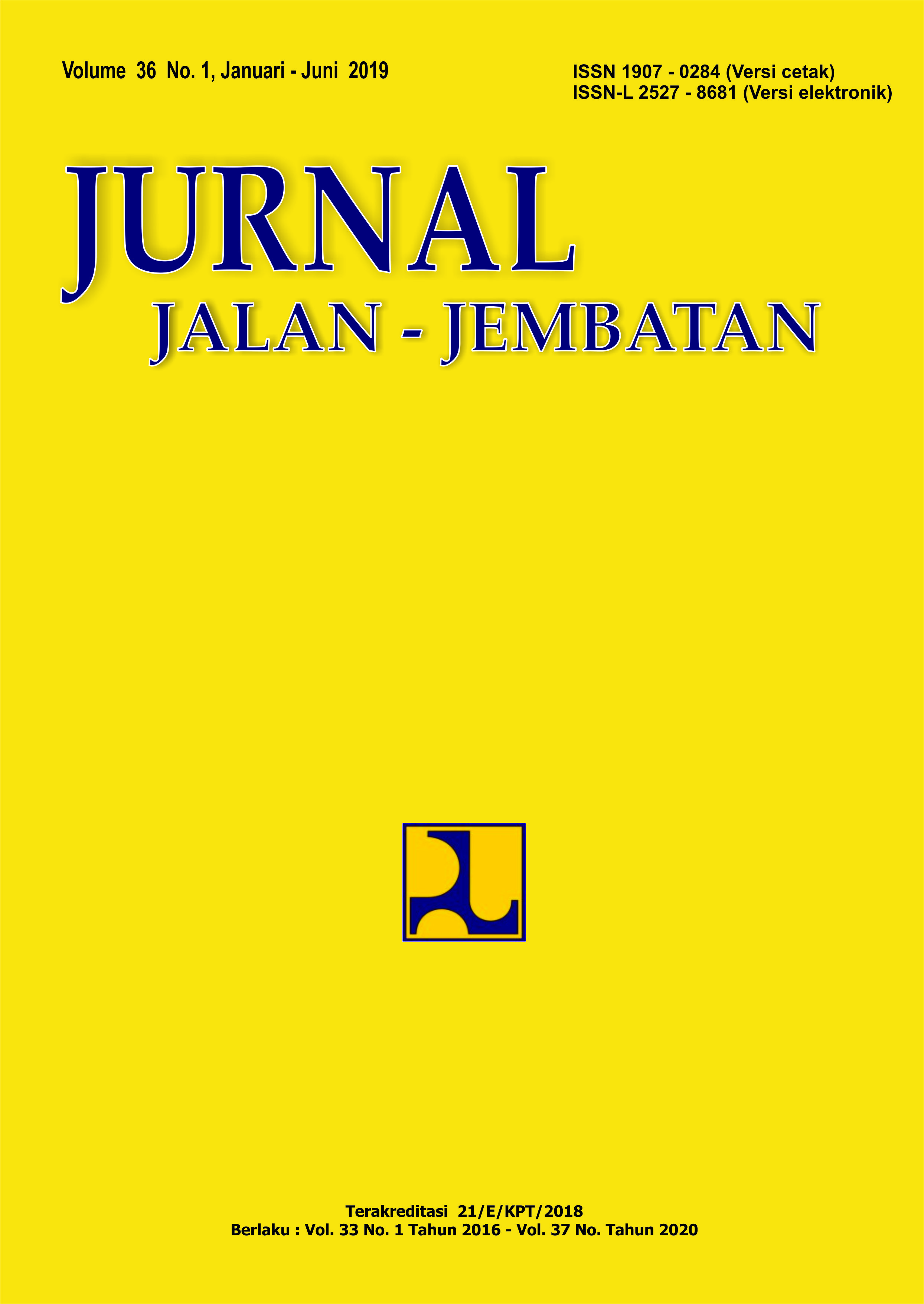(NUMERICAL EVALUATION OF CISUMDAWU TUNNEL EXCAVATION METHOD)
Main Article Content
Abstract
This paper presents results of research works carried out to evaluate the excavation method of the left (west) side of the Cisumdawu Tunnel by a numerical method. Using data obtained from site investigation during design process and face mapping at eight observation points, tunnel excavations by bench cut (multiple), full face with bench cut, and centre diaphragm methods were numerically modelled in two dimension using a finite element method. The numerical modelling results were compared with field measurement results to determine the most suitable excavation method applied in Cisumdawu Tunnel. Results of this research showed that roof displacements induced by the bench cut (multiple) excavation method obtained in the numerical modelling was close to that obtained in the field measurement. The bench cut (multiple) excavation method applied in the field induced lower roof displacement value than the full face with bench cut and centre diaphragm methods. However, the three excavation methods induced roof displacements lower than a 10 cm maximum displacement specified in the JSCE (2007) and roof strength factor > 1.25, indicating stable tunnel condition.
Article Details
Authors who publish in this journal agree to the following terms:
-
Authors retain copyright and grant the journal the right of first publication with the work simultaneously licensed under a Creative Commons Attribution License, which allows others to share the work with acknowledgment of the work's authorship and initial publication in this journal.
-
Authors may enter into additional contractual arrangements for the non-exclusive distribution of the journal's published version of the work (e.g., post it to an institutional repository or publish it in a book), with acknowledgment of its initial publication in this journal.
-
Authors are permitted and encouraged to post their work online (e.g., in institutional repositories or on their website) as it can lead to productive exchanges, as well as earlier and greater citation of the published work.
Each submitted manuscript must be accompanied by a "Manuscript Originality Statement" and a "Copyright Transfer Statement".

